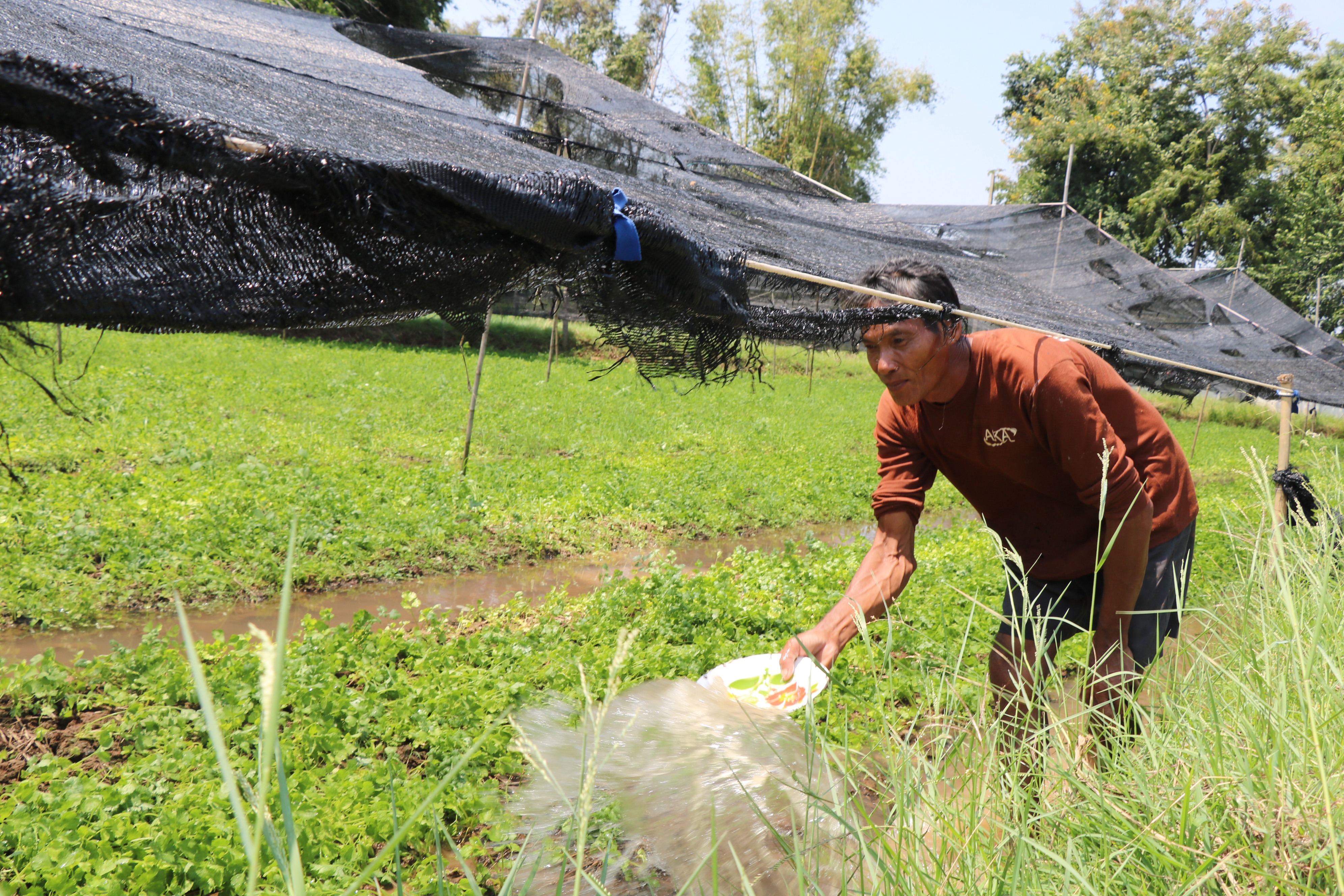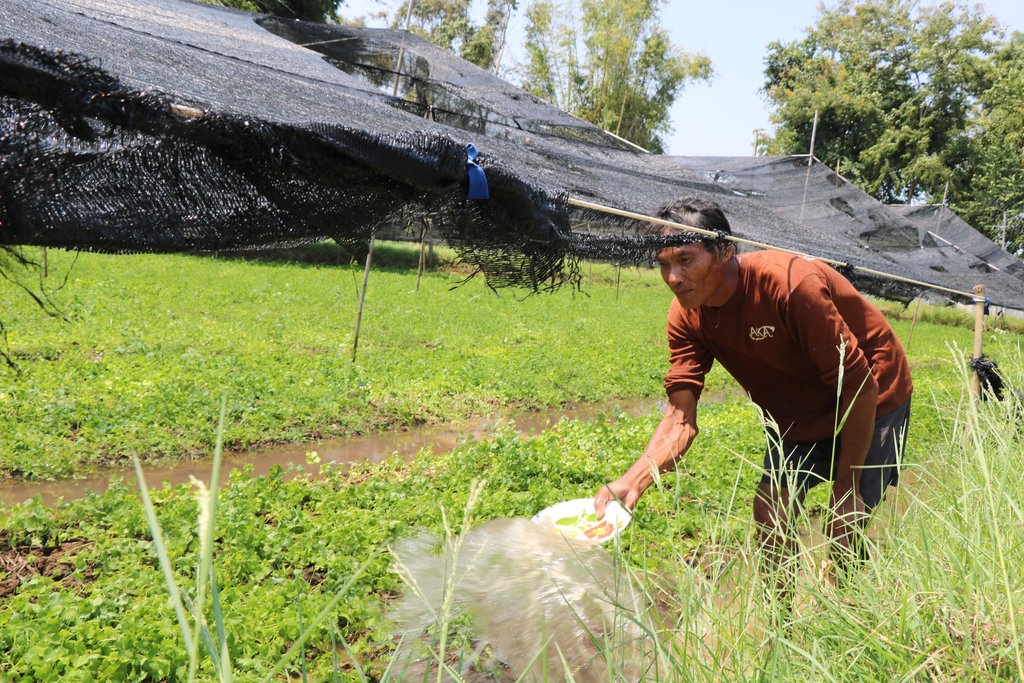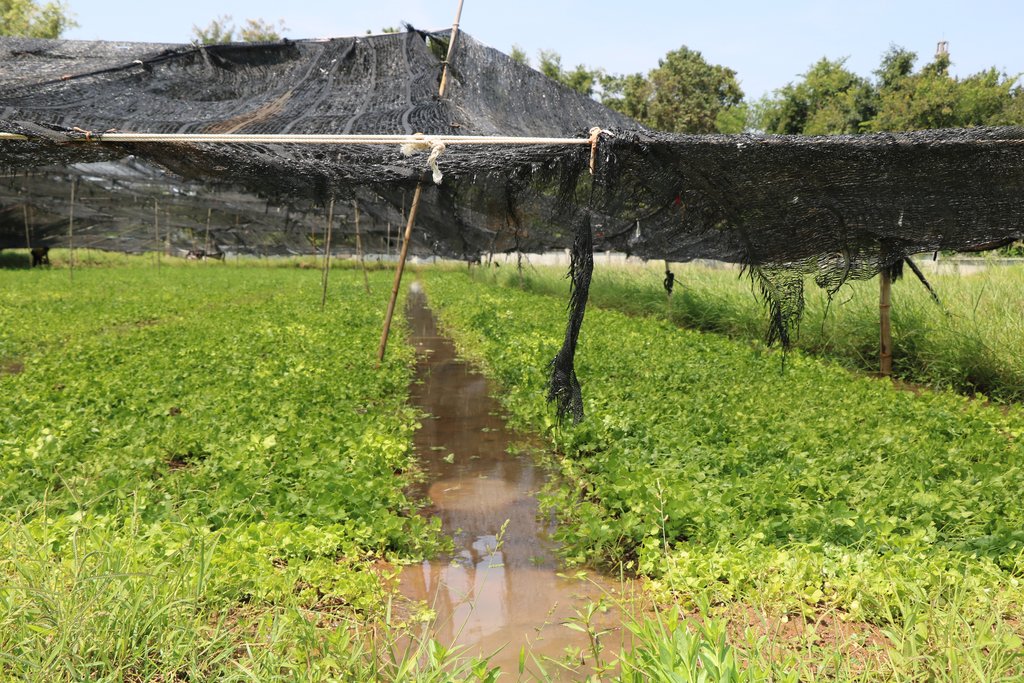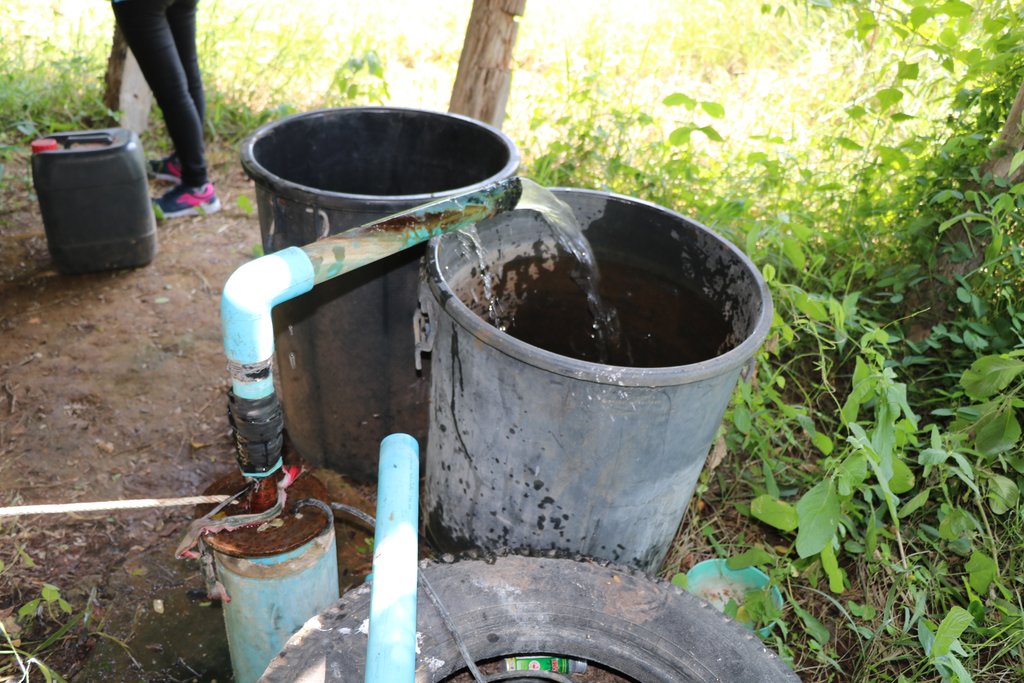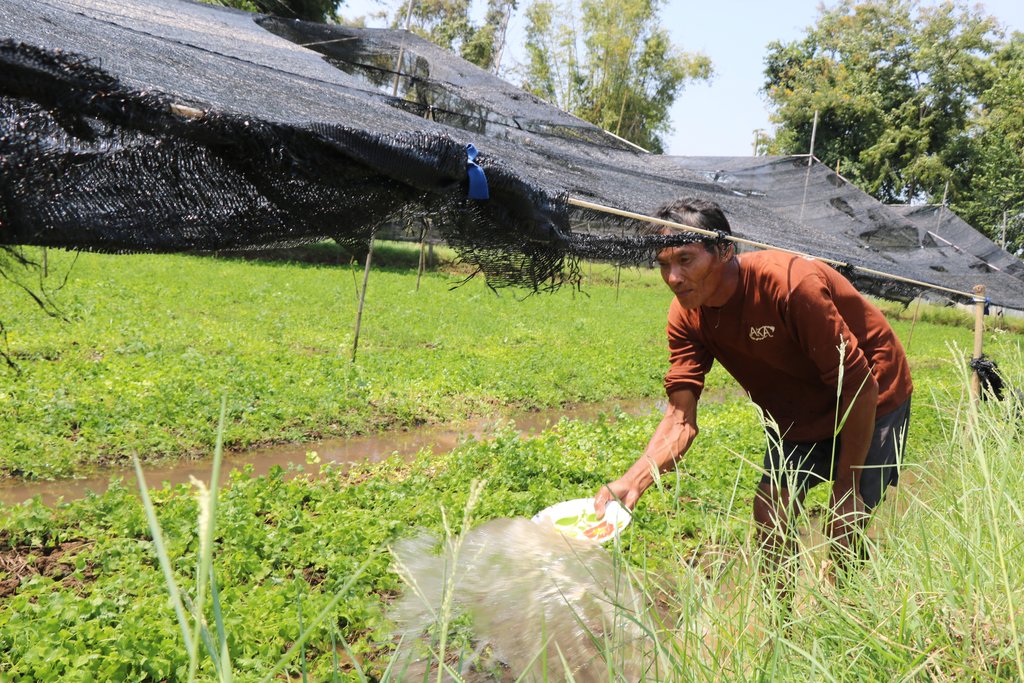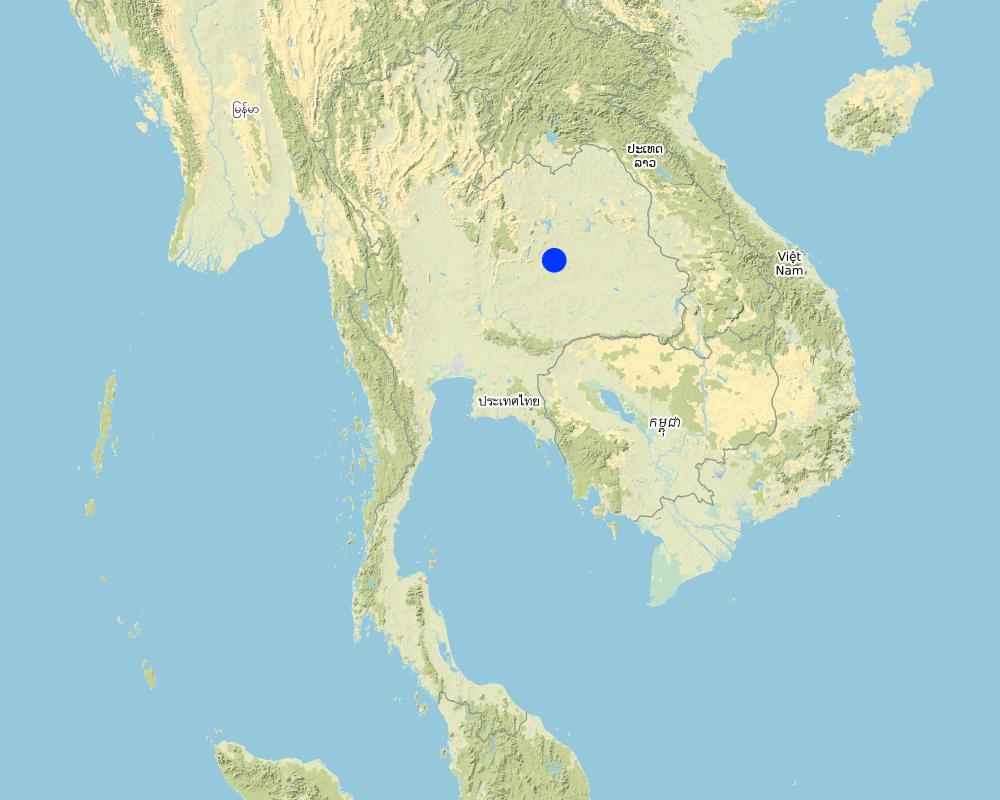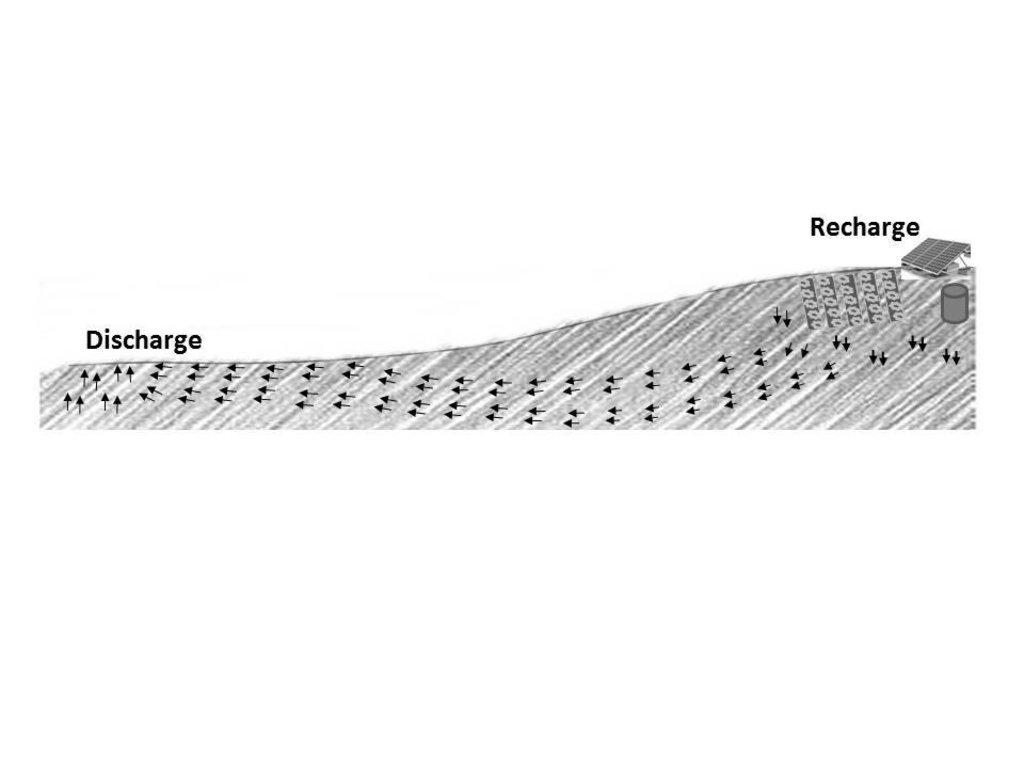Land Use Change from Rice to Vegetables [泰国]
- 创建:
- 更新:
- 编制者: supranee sritumboon
- 编辑者: –
- 审查者: Samran Sombatpanit, Rima Mekdaschi Studer, William Critchley
Growing Vegetables
technologies_4161 - 泰国
查看章节
全部展开 全部收起1. 一般信息
1.2 参与该技术评估和文件编制的资源人员和机构的联系方式
关键资源人
土地使用者:
Noithong Bualai
Farmer of Ban Kaonoi
泰国
Volunteer soil doctor:
Sommakate Boonmee
Volunteer soil doctor who is a farmer in a community; he volunteers and collaborates with the Regional Office of Land Development Department.
泰国
SLM专业人员:
Rhophandung Weera
Land Development Department Region 5
泰国
SLM专业人员:
SLM专业人员:
Phothinam Pornpana
Land Development Department Region 5
泰国
SLM专业人员:
Jakkarach Usa
Land Development Department Region 5
泰国
SLM专业人员:
Wangkaew Areerat
Land Development Department
泰国
national consultant:
有助于对技术进行记录/评估的项目名称(如相关)
Decision Support for Mainstreaming and Scaling out Sustainable Land Management (GEF-FAO / DS-SLM)有助于对技术进行记录/评估的项目名称(如相关)
Book project: where people and their land are safer - A Compendium of Good Practices in Disaster Risk Reduction (DRR) (where people and their land are safer)有助于对技术进行记录/评估的项目名称(如相关)
Book project: where the land is greener - Case Studies and Analysis of Soil and Water Conservation Initiatives Worldwide (where the land is greener)有助于对技术进行记录/评估的机构名称(如相关)
Land Development Department LDD (Land Development Department LDD) - 泰国1.3 关于使用通过WOCAT记录的数据的条件
编制者和关键资源人员接受有关使用通过WOCAT记录数据的条件。:
是
1.4 所述技术的可持续性声明
这里所描述的技术在土地退化方面是否存在问题,导致无法被认为是一种可持续的土地管理技术?:
否
注释:
The alteration of an inappropriate area from rice to vegetables, with a pump well installed for irrigation. Farmers could rotate the vegetables with paddy rice.
2. SLM技术的说明
2.1 技术简介
技术定义:
Land use change from rice to vegetables was started by a group of farmers with the help of the LDD who provided irrigation from groundwater through a 28m deep bore hole. This enables the groundwater level to be lowered preventing salination in the discharge area lower down.
2.2 技术的详细说明
说明:
Changing flooded rice to salt-tolerant vegetable production as recommended by LDD researchers was started 25 years ago by a group of farmers at Ban Kaonoi Village, Pueaiyai Sub-district, Non Sila District, Khon Kaen Province. The land is located in the recharge area, which is nonsaline, with groundwater that has a salinity level of 0.7 dS/m. Groundwater that moves downslope picks up salt - and deposits salt in low-lying areas, causing off-site salinization. The LDD supports the land use change from rice to vegetables for higher income while at the same time lowering groundwater levels. When rice is grown through flood irrigation the groundwater level rises. With vegetables, farmers try to use minimal amounts of water to prevent salt accumulation – a weekly rate of 90 m3/rai (560 m3/ hectare). The objectives of changing rice to vegetables are to (a) decrease water use (b) get higher incomes from growing salt-tolerant vegetables, and (c) prevent off-site salinization. Without a drainage system, the following slightly to moderately salt-tolerant vegetables are recommended: varieties of basil (Ocimum spp), celery (Apium graviolens) and coriander (Coriandrum sativum). Planting starts with land preparation and making beds 1 m wide and 0.3 m high, mixed with 500 kg/rai (3125 kg/hectare cow dung, with 0.3m wide irrigation furrows between the beds.
The vegetables are divided into two groups: long- and short-duration crops. Long-duration crops (e.g. basil) take 5 months before harvest. The first crop is planted mid-January and harvested at the end of May; the second crop is planted mid-July, and harvested mid-December. The short-duration crops of coriander and Chinese celery need a 75-80 day growing period. The first sowing starts late January/ February and harvest is mid-April; the second sowing is late July, with harvest early October. Only short-duration crops can be planted after the rice harvest in December or earlier. Maintenance includes weeding (by hand) and fertilizer application. Labour is required for supplementary irrigation - by spraying water on the leaves as required – and once a week irrigation is applied through the furrows. The costs and benefits are calculated; the costs include seed, fertilizer, and labour for land preparation, planting, irrigation, maintenance, and harvesting. The farmers favor the technology because the crops can grow well in such circumstances and the products meet the market’s demand. In such way, farmers get higher income compared with rice, while crop residues and weeds can be used as animal feed.
2.3 技术照片
关于照片的一般说明:
The images show the process of vegetable cultivation in a village that farmers developed from their experience.
2.4 技术视频
日期:
02/10/2018
位置:
Ban Kaonoi
摄影师的名字:
Supranee Sritumboon
2.5 已应用该技术的、本评估所涵盖的国家/地区/地点
国家:
泰国
区域/州/省:
Northeast/Khon Kaen
有关地点的进一步说明:
Ban Kaonoi is in Non Sila Sub-district, Banphai District, Khon Kaen Province.
具体说明该技术的分布:
- 均匀地分布在一个区域
如果不知道精确的区域,请注明大致覆盖的区域:
- 1-10 平方千米
技术现场是否位于永久保护区?:
否
注释:
This technology is distributed in a paddy area with slight salinity, which is within a recharge area.
Map
×2.6 实施日期
如果不知道确切的年份,请说明大概的日期:
- 10-50年前
2.7 技术介绍
详细说明该技术是如何引入的:
- 通过土地使用者的创新
- 通过项目/外部干预
- as part of a traditional system over 25 years
注释(项目类型等):
Technology was developed by the farmers and disseminated in the area as a traditional system and then further developed and disseminated through the project by Land Development Department Region 5.
3. SLM技术的分类
3.1 该技术的主要目的
- 改良生产
- 适应气候变化/极端天气及其影响
- 创造有益的经济影响
3.2 应用该技术的当前土地利用类型

农田
- 一年一作
年作 - 具体指明作物:
- 谷类 - 水稻(湿地)
- paddy rice and vegetables
每年的生长季节数:
- 3
具体说明:
1 crop of paddy rice and 2 crops of vegetables but only in the lower level fields with a better water supply
采用轮作制度了吗?:
是
如果是,请具体说明:
The vegetables as Apium gravcolens L., and Coriandrum sativum L. will be grown after rice harvesting.

水道、水体、湿地
- Pump well
主要产品/服务:
Farmers use water from a pump well for vegetables; the well should not be deeper than 30 m.
注释:
Farmer constructed the pump well where they plant vegetables. Also, they can use the pump well for paddy rice in a drought year such as in 2018.
3.3 由于技术的实施,土地使用是否发生了变化?
由于技术的实施,土地使用是否发生了变化?:
- 是(请在技术实施前填写以下有关土地利用的问题)
同一土地单元内混合使用的土地::
否

农田
- 一年一作
- Paddy rice and vegetables (Ocimum basilicum L., Ocimum tenuiflorum L., Ocimum x africanum Lour.)
采用轮作制度了吗?:
是
如果是,请具体说明:
Vegetables (Apium gravcolens L. and Coriandrum sativum L.) will be rotated with paddy rice.
注释:
Vegetables were mainly growing in some paddy areas in the uplands. Moreover, farmers will grow vegetables after rice harvesting in lowland fields.
3.4 供水
该技术所应用土地的供水:
- 混合雨水灌溉
注释:
The area is under rainfed agriculture but farmers set up the pump well to support cultivation.
3.5 该技术所属的SLM组
- 轮作制度(轮作、休耕、轮垦)
- 农畜综合管理
- 地下水管理
3.6 包含该技术的可持续土地管理措施

农艺措施
- A1:植被和土壤覆盖层
- A2:有机质/土壤肥力

结构措施
- S7:集水/供水/灌溉设备

管理措施
- M6:废物管理(回收、再利用或减少)
注释:
Farmers applied farmyard manure for soil improvement in the vegetable area. All or most households keep cattle so they have manure for such use.
3.7 该技术强调的主要土地退化类型

化学性土壤退化
- Cs:盐化/碱化

物理性土壤退化
- Pc:压实
- Pk:熟化和结壳

生物性退化
- Bc:植被覆盖的减少
- Bq:数量/生物量减少
- Bl:土壤寿命损失

水质恶化
- Hq:地下水水质下降
注释:
The area where such technology is applied is located in a slightly saline and recharge zone.
3.8 防止、减少或恢复土地退化
具体数量名该技术与土地退化有关的目标:
- 减少土地退化
- 适应土地退化
注释:
Reducing and adapting to land degradation and climate change.
4. 技术规范、实施活动、投入和成本
4.1 该技术的技术图纸
技术规范(与技术图纸相关):
Schematic cross-section of groundwater flow from downward movement in the recharge zone with salt pick up along the pathway and salt deposit in the discharge area by upward movement.
4.2 有关投入和成本计算的一般信息
具体说明成本和投入是如何计算的:
- 每个技术区域
注明尺寸和面积单位:
1 rai
如果使用本地面积单位,注明转换系数为1公顷(例如1公顷=2.47英亩):1公顷=:
1 ha = 6.25 rai
其它/国家货币(具体说明):
THB
如相关,注明美元与当地货币的汇率(例如1美元=79.9巴西雷亚尔):1美元=:
32.0
注明雇用劳工的每日平均工资成本:
300
4.3 技术建立活动
| 活动 | 时间(季度) | |
|---|---|---|
| 1. | Drilling a pump well | May-July |
| 2. | Preparation of plots to produce vegetable seedlings | May-July |
| 3. | Vegetable planting | May-July |
| 4. | Fertilizer application | before planting |
4.4 技术建立所需要的费用和投入
| 对投入进行具体说明 | 单位 | 数量 | 单位成本 | 每项投入的总成本 | 土地使用者承担的成本% | |
|---|---|---|---|---|---|---|
| 劳动力 | Preparing vegetable garden | rai | 1.0 | 1200.0 | 1200.0 | |
| 劳动力 | Harvesting cost | person | 12.0 | 300.0 | 3600.0 | |
| 植物材料 | Parsley seeds | gram | 300.0 | 0.183 | 54.9 | |
| 植物材料 | Celery seeds | gram | 400.0 | 1.375 | 550.0 | |
| 植物材料 | Sweet basil seeds | gram | 800.0 | 0.25 | 200.0 | |
| 肥料和杀菌剂 | Compost 1.25 THB/kg, application rate 1,000 kg/rai | time | 1.0 | 1252.0 | 1252.0 | |
| 肥料和杀菌剂 | Urea fertilizer 12 THB/kg, application rate 50 kg/rai | time | 1.0 | 600.0 | 600.0 | |
| 技术建立所需总成本 | 7456.9 | |||||
| 技术建立总成本,美元 | 233.03 | |||||
如果土地使用者负担的费用少于100%,请注明由谁负担其余费用:
Land Development Department
注释:
Note: where a well is dug the cost is USD 310 (approx)
4.5 维护/经常性活动
| 活动 | 时间/频率 | |
|---|---|---|
| 1. | Fertilizer application | 2 times/crop |
| 2. | Irrigation for parsley and celery | 90 days/crop |
| 3. | Irrigation for sweet basil | 180 days/crop |
4.6 维护/经常性活动所需要的费用和投入(每年)
| 对投入进行具体说明 | 单位 | 数量 | 单位成本 | 每项投入的总成本 | 土地使用者承担的成本% | |
|---|---|---|---|---|---|---|
| 劳动力 | Irrigation for parsley and celery | day | 16.875 | 300.0 | 5062.5 | |
| 劳动力 | Irrigation for sweet basil | day | 11.25 | 300.0 | 3375.0 | |
| 肥料和杀菌剂 | Urea fertilizer 12 THB/kg, application rate 25 kg/rai | time | 5.0 | 300.0 | 1500.0 | |
| 技术维护所需总成本 | 9937.5 | |||||
| 技术维护总成本,美元 | 310.55 | |||||
4.7 影响成本的最重要因素
描述影响成本的最决定性因素:
Drilling a pump well because water is the most important factor for the production.
5. 自然和人文环境
5.1 气候
年降雨量
- < 250毫米
- 251-500毫米
- 501-750毫米
- 751-1,000毫米
- 1,001-1,500毫米
- 1,501-2,000毫米
- 2,001-3,000毫米
- 3,001-4,000毫米
- > 4,000毫米
指定年平均降雨量(若已知),单位为mm:
1200.00
注明所考虑的参考气象站名称:
Upper Northeastern Meteorological Center
农业气候带
- 潮湿的
5.2 地形
平均坡度:
- 水平(0-2%)
- 缓降(3-5%)
- 平缓(6-10%)
- 滚坡(11-15%)
- 崎岖(16-30%)
- 陡峭(31-60%)
- 非常陡峭(>60%)
地形:
- 高原/平原
- 山脊
- 山坡
- 山地斜坡
- 麓坡
- 谷底
垂直分布带:
- 0-100 m a.s.l.
- 101-500 m a.s.l.
- 501-1,000 m a.s.l.
- 1,001-1,500 m a.s.l.
- 1,501-2,000 m a.s.l.
- 2,001-2,500 m a.s.l.
- 2,501-3,000 m a.s.l.
- 3,001-4,000 m a.s.l.
- > 4,000 m a.s.l.
说明该技术是否专门应用于:
- 不相关
5.3 土壤
平均土层深度:
- 非常浅(0-20厘米)
- 浅(21-50厘米)
- 中等深度(51-80厘米)
- 深(81-120厘米)
- 非常深(> 120厘米)
土壤质地(表土):
- 细粒/重质(粘土)
土壤质地(地表以下> 20厘米):
- 细粒/重质(粘土)
表土有机质:
- 低(<1%)
5.4 水资源可用性和质量
地下水位表:
5-50米
地表水的可用性:
中等
水质(未处理):
仅供农业使用(灌溉)
水质请参考::
地下水和地表水
水的盐度有问题吗?:
是
该区域正在发生洪水吗?:
否
5.5 生物多样性
物种多样性:
- 中等
栖息地多样性:
- 中等
5.6 应用该技术的土地使用者的特征
定栖或游牧:
- 定栖的
生产系统的市场定位:
- 商业/市场
非农收入:
- 低于全部收入的10%
相对财富水平:
- 丰富
个人或集体:
- 团体/社区
机械化水平:
- 手工作业
- 机械化/电动
性别:
- 女人
- 男人
土地使用者的年龄:
- 中年人
- 老年人
5.7 应用该技术的土地使用者使用的平均土地面积
- < 0.5 公顷
- 0.5-1 公顷
- 1-2 公顷
- 2-5公顷
- 5-15公顷
- 15-50公顷
- 50-100公顷
- 100-500公顷
- 500-1,000公顷
- 1,000-10,000公顷
- > 10,000公顷
这被认为是小规模、中规模还是大规模的(参照当地实际情况)?:
- 中等规模的
5.8 土地所有权、土地使用权和水使用权
土地所有权:
- 个人,有命名
土地使用权:
- 自由进入(无组织)
用水权:
- 自由进入(无组织)
土地使用权是否基于传统的法律制度?:
是
5.9 进入服务和基础设施的通道
健康:
- 贫瘠
- 适度的
- 好
教育:
- 贫瘠
- 适度的
- 好
技术援助:
- 贫瘠
- 适度的
- 好
就业(例如非农):
- 贫瘠
- 适度的
- 好
市场:
- 贫瘠
- 适度的
- 好
能源:
- 贫瘠
- 适度的
- 好
道路和交通:
- 贫瘠
- 适度的
- 好
饮用水和卫生设施:
- 贫瘠
- 适度的
- 好
金融服务:
- 贫瘠
- 适度的
- 好
6. 影响和结论性说明
6.1 该技术的现场影响
社会经济效应
生产
作物生产
注释/具体说明:
An increase in production because the famers get greater yields and have more diversified crops.
作物质量
产品多样性
生产区域
土地管理
水资源可用性和质量
饮用水的可用性
注释/具体说明:
Water for livestock and irrigation increases - but no difference to drinking water
饮用水的质量
家畜用水的可用性
灌溉用水的可用性
灌溉用水的质量
收入和成本
农业收入
注释/具体说明:
Large increase because of more water availability for irrigation.
收入来源的多样性
社会文化影响
食品安全/自给自足
健康状况
SLM/土地退化知识
生态影响
水循环/径流
水量
水质
土壤
土壤水分
土壤覆盖层
养分循环/补给
盐度
生物多样性:植被、动物
植被覆盖
植物多样性
动物多样性
减少气候和灾害风险
干旱影响
6.2 该技术的场外影响已经显现
水资源可用性
6.3 技术对渐变气候以及与气候相关的极端情况/灾害的暴露和敏感性(土地使用者认为的极端情况/灾害)
渐变气候
渐变气候
| 季节 | 增加或减少 | 该技术是如何应对的? | |
|---|---|---|---|
| 年温度 | 减少 | 好 | |
| 年降雨量 | 增加 | 好 |
气候有关的极端情况(灾害)
气候灾害
| 该技术是如何应对的? | |
|---|---|
| 干旱 | 好 |
6.4 成本效益分析
技术收益与技术建立成本相比如何(从土地使用者的角度看)?
短期回报:
积极
长期回报:
非常积极
技术收益与技术维护成本/经常性成本相比如何(从土地使用者的角度看)?
短期回报:
积极
长期回报:
非常积极
6.5 技术采用
- > 50%
在所有采用这项技术的人当中,有多少人是自发的,即未获得任何物质奖励/付款?:
- 51-90%
6.6 适应
最近是否对该技术进行了修改以适应不断变化的条件?:
是
若是,说明它适应了哪些变化的条件:
- 劳动力可用性(例如,由于迁移)
6.7 该技术的优点/长处/机会
| 土地使用者眼中的长处/优势/机会 |
|---|
| Get higher income from land use change from rice to vegetables. |
| Decrease water use compared to rice cultivation. |
| 编制者或其他关键资源人员认为的长处/优势/机会 |
|---|
| Lowering groundwater level. |
| Increasing farmer income. |
| Prevents salination at the discharged low-lying area. |
6.8 技术的弱点/缺点/风险及其克服方法
| 土地使用者认为的弱点/缺点/风险 | 如何克服它们? |
|---|---|
| Farmers need to find the market by themselves. | Expanding the vegetable plantation area will draw merchants to come and buy in the community. |
| 编制者或其他关键资源人员认为的弱点/缺点/风险 | 如何克服它们? |
|---|---|
| Some farmers prefer rice cultivation to growing vegetables. | Provide more information on land use change and create understanding of salination effects by the farmer. |
7. 参考和链接
7.1 信息的方法/来源
- 实地考察、实地调查
Visit 2 land user's land
- 与土地使用者的访谈
Interview with group of 7 farmers
- 与SLM专业人员/专家的访谈
A Land Development Department officer
7.2 参考可用出版物
标题、作者、年份、ISBN:
Land Development Department
可以从哪里获得?成本如何?
http://www.ldd.go.th/
7.3 链接到网络上的相关信息
标题/说明:
where the land is greener - Case Studies and Analysis of Soil and Water Conservation Initiatives Worldwide
URL:
https://www.wocat.net/library/media/27/
标题/说明:
where people and their land are safer - A Compendium of Good Practices in Disaster Risk Reduction (DRR) (where people and their land are safer)
URL:
https://www.wocat.net/en/projects-and-countries/projects/drr
7.4 一般注释
The questionnaire is very complicated.
链接和模块
全部展开 全部收起链接
无链接
模块
无模块


